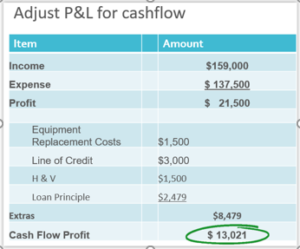By Dave Ramsey, CEO Ramsey Solutions

Employees everywhere have been looking at their options for a while now. They’ve been weighing the costs of making a career change, seeing if it’s feasible and mustering the courage to quit. It has become such an epidemic that many have begun referring to it by an ominous name: The Great Resignation.
According to some reports, more than 40% of employees are considering quitting their jobs. For many of those folks it’s a seller’s market, where their skills are more in demand than ever before. The flip side? Those shifting gears on their careers comes at a high cost to the businesses they leave. And for those jilted businesses, seeing employees depart has been a wake-up call to prioritize employee retention.
Why Employees Leave
The first thing to understand is that there are two types of employee turnover: voluntary and involuntary. Voluntary turnover is when an employee chooses to leave the company on their own terms. This could look like an employee leaving for a higher-paying job, burnout, a new mother choosing to stay home with her kiddo over returning to work, an employee leaving over differences with leadership, or an employee reaching their time to retire. Involuntary turnover is when the business chooses to end its relationship with the employee.
The problem is that too many companies think their employee retention strategies should only span from hire to fire when they really ought to stretch from hire to retire. By aiming to support the whole person and their whole career, you’re more likely to keep them around longer.
Effects of Poor Employee Retention
Anyone with an ounce of business sense knows their company won’t be as successful as it could if it’s constantly hemorrhaging employees. Not only does turnover cost a lot, it puts an unnecessary strain on the remaining employees.
Turnover is expensive. It can cost 50 to 75% (or six to nine months) of their annual salary to replace someone. Based on median salary data from the Bureau of Labor Statistics, just one median-salaried employee quitting can cost a company more than $38,000. How? Recruitment costs, training their replacement, potential lost revenue, the burden on other employees . . . And obviously if you end up paying severance, that makes it even more expensive.
5 Employee Retention Strategies
Pay Them What They’re Worth – You can’t expect employees to feel great about working at your company if you pay them less than they deserve. If you aren’t competitive with compensation in today’s job market, you’ll put yourself out of business.
Make a Regular Habit of Recognition – Employees aren’t just units of production. They’re human beings who need to feel appreciated. Lots of times, employees just want genuine appreciation—in private conversation and in front of their peers. There are countless ways to show it without costing the company a ton of money.
Don’t Pass Up Talented Internal Employees for External Hires – If you don’t look at the employees you already have to fill positions of need, you’re doing it wrong. Your employees need to have an opportunity to grow in their careers at your company if they’re going to be there for the long haul. Without a clear path to career growth at your company, they’ll feel like their job is just a step along the way to their ideal landing spot.
Do Whatever It Takes to Build Trust – Employees need to feel like they have the trust of their leaders. When they’ve got leeway to flex their muscles and use their skills and talents, they’ll find more satisfaction in their roles. Clearly trust must be earned, but when you trust your employees—and they trust you—they’re going to invest a lot more of themselves in your company.
Offer Life-Changing Employee Benefits – The days of the status quo employee benefits being enough are over. If you want to be competitive in recruitment and retention, you have to offer life-changing benefits. Consider adding a benefit like financial wellness. Think about benefits like assistance with childcare, an HSA company match, company-paid-for long-term disability insurance or maybe student loan repayment and/or tuition assistance.
Employees leaving at record rates may not last forever, but the reasons for them doing so are sure to become the new normal. Business and benefits leaders must respond by adjusting their strategies to that new normal if they’re going to stand a chance at keeping their talent in house!
* Leadership and small business expert Dave Ramsey is CEO of Ramsey Solutions. He has authored numerous best-selling books, including EntreLeadership.
The Ramsey Show is heard by 18 million listeners each week on more than 600 radio stations and multiple digital platforms.




